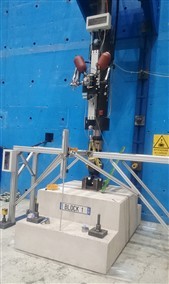Keeping ITER intact: F4E’s seismic work


As a nuclear facility, ITER has special requirements for almost all its components and structures in case of natural hazards such as earthquakes, flooding and other extreme weather conditions. ITER follows the French nuclear regulation (Règles Fondamentales de Sûreté) and the French laws and decrees for the application of the European standards (for example, Eurocode 8 for earthquakes). All ITER buildings and components are designed to withstand potential natural disasters. For each natural hazard, reference events are designed based on history from past and present observations in the geographic area.
For seismic hazards, the reference earthquake event for a given building is characterised by its magnitude (the energy released during the earthquake), the distance between the epicentre and the building, and its intensity (the vibration effect on the surface – ‘the shaking’). This information is used by ITER and F4E engineers to calculate and estimate of the forces which are used to design the components and buildings.
“The shaking of each component will be different in the event of an earthquake. Therefore the engineers needs to calculate the shaking of each of component as well as the shaking of each building”, explains Didier Combescure, F4E Technical Officer dealing with seismic activities and structural dynamics. Together with Jordi Ayneto, F4E seismic calculation analyst, Didier Combescure helps people perform calculations and seismic qualification in accordance to French, European and other international accepted practice for nuclear facilities. “A typical day can involve placing an ITER component on a ‘shaking table’ – this means that we simulate an earthquake (for example, the Paleo earthquake for ITER: magnitude 7 on the Richter scale at an 18.5 km distance) by shaking the table and characterising the behaviour of the component and verifying its capability to withstand the shaking”, says Didier Combescure. “Other activities involve verifying the resistance of component parts by numerical calculation or by trying to pull them apart experimentally. We work together with European earthquake testing laboratories”. In addition, F4E needs to be sure that the contractors with which we work with are qualified in seismic engineering – therefore F4E’s seismic work also entails selecting contractors who fit F4E’s stringent seismic technical requirements and when they have been selected, F4E ensures that they continue to consolidate their expertise by checking their tools and methods against observations made on experimental campaigns and real earthquake events around the world.
In the seismic field, the international collaboration is vital in order to be able to answer to society’s demands for safe buildings and machines. “In a project like ITER where all the international ITER Parties need to deliver components which fulfil the French nuclear safety requirements, it is clear that the international collaboration is fundamental. The tools and the measurement that we have access to are constantly improving. This enables us to better prevent the effect of earthquakes”, he concludes.